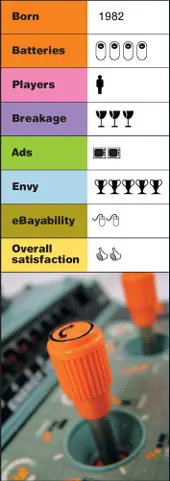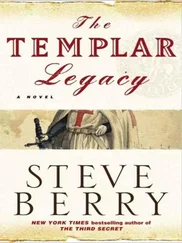But, oh, there’s a word. Decals.
It’s hard to imagine a time when we hadn’t heard of them. A time, perhaps, when we could see an RAF livery without immediately picturing one. A time before we soaked one in a bowl of warm water, slid it off its backing paper and placed it on the wing of a Spitfire or a Wellington Bomber.
For the purposes of this entry, we’re limiting our examination to model planes. Because it was only the model planes that came in such a ridiculously varied range of scales and classes. Because you couldn’t hang a miniature replica vintage Darracq from a piece of fishing line thumbtacked to the ceiling. Because the big ships had annoyingly fiddly tacking rigging and plastic sails.
See also Hornby Railway Set, LEGO, Flight Deck
And because the planes had a truly aspirational hierarchy (which we seem to recall was based largely around the number of moving parts. Pretty much all the model cars had proper moving wheels, but it was only the bigger and badder model aircraft that included moving propellers, rotating gun-turrets and tyres, or fully opening bomb-bays and cockpits). Therefore, they win.
The decals, of course, were one of many hobby-threatening booby-traps designed to scupper your enjoyment, getting forever crinkled or folded before they could be applied properly. Here’s another: polystyrene cement–which could be guaranteed to coagulate into crusty white flakes all over your fingers and tabletop without ever acting as a useful plastic adhesive. 1
Worse still was discovering a missing part. You then had to fill out a flimsy form, send it off to Airfix and wait an interminable amount of time for the spare to arrive in the post. 2 But the biggest disappointment with any Airfix Kit was the huge disparity between the size of the box and the size of the finished model. We’re looking at you, Hawker Harrier.
1 It was also handy for adding an unwanted ‘frosted’ bathroom window effect to the previously clear cockpit covers.
2 Dick Emery, comedian and then president of the Airfix Modellers Club, ran his expanded polystyrene empire in the pages of British comics. In January 1975, he rather excitingly revealed the launch of the company’s new 1:12 scale construction kit of Anne Boleyn. That’ll get ’em gluing, Dick!
Armatron
Programmable robotic arm

While the foreign car factories were laying off staff in favour of this toy’s older brothers, kids across the land were celebrating their new-found ability to remotely move objects around the kitchen table. By twiddling around a couple of joystick levers on the base, Armatron’s various shoulder, wrist and elbow joints could be manoeuvred to pick up anything within it’s admittedly limited reach. In theory. Anything slightly more delicate than the plastic canisters, cones and globes included (an egg, say) would break under pressure between the rubberised jaws, and so any notions of performing David Banner-style laboratory experiments were soon similarly shattered.
Although the lab-coated ginger kids on the box photos hinted otherwise, Armatron was actually intended as a race-against-time game of skill and coordination. Bright-orange ‘energy-level’ indicators on the console acted as a kind of countdown: when the gauge reached zero (‘total discharge’), Armatron turned itself off. Although this probably conserved some of that D-cell battery life, it wasn’t half annoying if you were just seconds away from tightly gripping on to your sleeping cat’s tail.
Armatron was manufactured in Singapore by Tomy and imported by Radio Shack, inspiring loads of knock-off versions in the ’80s. 1 A veritable miracle of engineering, it shipped with a single electric motor and a mass of nylon gears and clutches throughout the entire base and arm (as anyone who opened it up would discover). A late addition to the range was the Mobile Armatron , which came on caterpillar tracks (though the remote control wire was only half a metre long). Quite what this added to the game is anyone’s guess.
Robotics enthusiasts delighted in ‘hacking’ the toy (i.e. ‘tricking it out’ with motion sensors or a steam-powered engine), which makes a complete one hard to track down these days. In any case, poorer kids had to make do with the manually ratchet-operated Robot Arm , a Terminator-esque Robot Hand or Robot Claw , each of which–though less impressive–could be secreted up the sleeve of a Parka to aid in the pretence of the owner having been transformed into some kind of futuristic human cyborg. Pop into Hamleys and you’ll find a new version of these going by the name Armatron. But we know the truth.
See also Tasco Telescope, Electronic Project, Slinky
1 Radio Shack eventually acquired the manufacturing rights and re-released the toy in the ’90s under the new name Super Armatron , even though it was mechanically exactly the same.
Backgammon
Pork-soundalike dice ’n’ counters game

There are two reasons why this venerable strategy game leapfrogs those other most austere of board games, chess and draughts, into our list. First, its sheer perverseness. There it was–the backgammon board–always hiding on the other side of the travel draughts, stubbornly resisting comprehension. Not for backgammon the patchwork of squares. Oh no! This thing needed a whole new board with ‘quadrants’ and a ‘bar’ and everything.
Second, the whiff of maturity, the wisdom of ages. Backgammon carried the weight of millennia and, though we didn’t know it at the time, we could sense it. The ancient Egyptians, the Byzantine emperors of Mesopotamia and now us–the great unwashed of suburbia–all staring at the pointy triangle things. At the very least, it proffered a vacant seat at the big table–a proper conversation between adult and child as the rules were explained.
Yet also it was accessible, but not too indiscriminate. Unlike the untouchable ivory chess set in your best mate’s dad’s study, you could get your hands dirty with the backgammon counters. Those green, snot-sleeved draughts players with their petulant ‘crown me!’s kept their distance. Backgammon had a vocabulary of its own: bearing off, kibitzers, the gin position, double bumps and mandatory beavers…Hang on: maybe they were just making this up as they went along after all.
See also Othello, Connect Four, Yahtzee
Oh, and we lied up there. There was a third reason why we wanted a backgammon of our own: the huge surge in popularity it underwent in the 1970s. Rather like snooker in the ’80s and football in the ’90s, backgammon suddenly became trendy. Leading players jetted from tournament to tournament, wrote bestselling books (about backgammon, obviously) and made the front pages in ‘my hotel sex-romp roast hell’ tabloid headlines. 1
However, we come not to damn the game but to praise its Cream-era maker. Before Paul Heaton and his mates were a twinkle in a skiffle-humming Hull milkman’s eye, the name ‘House Martin’ was already a stamp of quality thanks to the Hackney-based games factory. Specialising in no-nonsense, phlegmatic renderings of popular post-war games, House Martin unashamedly embossed every box with the legend ‘Made in England’. No wonder they went under.
Читать дальше













